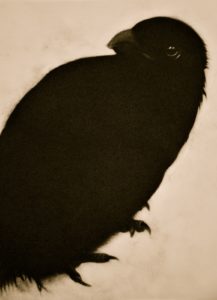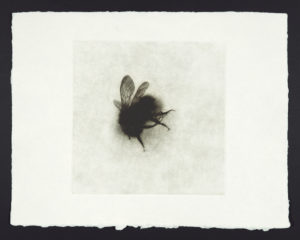

My school friend’s grandfather had a beautiful house in Co Kerry, set atop a small hill at the end of a long tree-lined avenue, with huge bay windows to the front looking out and down over the fields. It was painted the most wonderful warm yellow. On one visit, the house was buzzed by a helicopter. It circled for quite some time, presumably to get a good view of the house and its surroundings. My friend’s mother called for the shotgun and announced she was going to “blast the f*cker out of the sky.” I was told that it was the Taoiseach on his way out to visit his island and that this wasn’t the first time this had happened. I have no idea whether or not this was actually true, but it makes for a good story. Mostly though, the shotgun was deployed elsewhere.

Just behind and to the side of the house was a small wood where there resided in clamorous community a murder of crows. My friend’s older brother M was despatched, shotgun in hand, to “deal with them”. This was my first exposure to the harsher side of country living. Always one to root for the underdog, I fervently wished the crows victory in the ensuing battle. And they were, for the wood remained resolutely alive to their shouted conversations. I wonder now whether M actually ever took aim.
Later, when I moved away to London I brought with me my love of the resilient crow. Our wedding present from my in-laws was an oil painting by Barry Mickleburgh of three velvety black crows huddled on sharp silver barbed wire on a blood red linen ground. When my husband and I parted ways many years later, he got custody of Crows on Barbed Wire.

So when I first saw My Heart a Wounded Crow by Sarah Gillespie at the Royal Academy Summer Exhibition not long after we had parted, it seemed fated, both for the subject and the title. She writes how she came to make this mezzotint engraving on her blog. She writes beautifully, eloquently, engagingly. I make no attempt to paraphrase here. I lost my heart to Gabriel’s crow.
Others have written compellingly on her work. I urge you to read their essays and her blog for an insight into this hugely talented and thoughtful artist. For me, it’s the qualities of stillness, luminosity, transience, fragility, and the interconnectedness of all life that she captures in her paintings and engravings that speak most loudly in their poignant quietude. Her work has accompanied, consoled and inspired me during perhaps the most difficult time in my life.

Her latest exhibition at the Beaux Arts Gallery in London has recently finished. I did not make it to the show, having misread the dates, so in consolation bought On Presence, a thought-provoking series of essays and drawings in collaboration with her uncle Peter Reason, an author who seeks to “…link the tradition of nature writing with the ecological crisis of our times.” I was particularly struck by the following from the essay Art in a Time of Catastrophe,
“…we are not separate. For if we know we are not separate we are, perhaps, less willing to harm.”
Let not End of the Summer be the end of all things.
Sarah Gillespie’s work Poplar Hawk Moth, Mezzotint, is now on show at the 2019 Royal Academy Summer Exhibition.
If you would like Musings to pop into your inbox every other week or so, you can subscribe here.